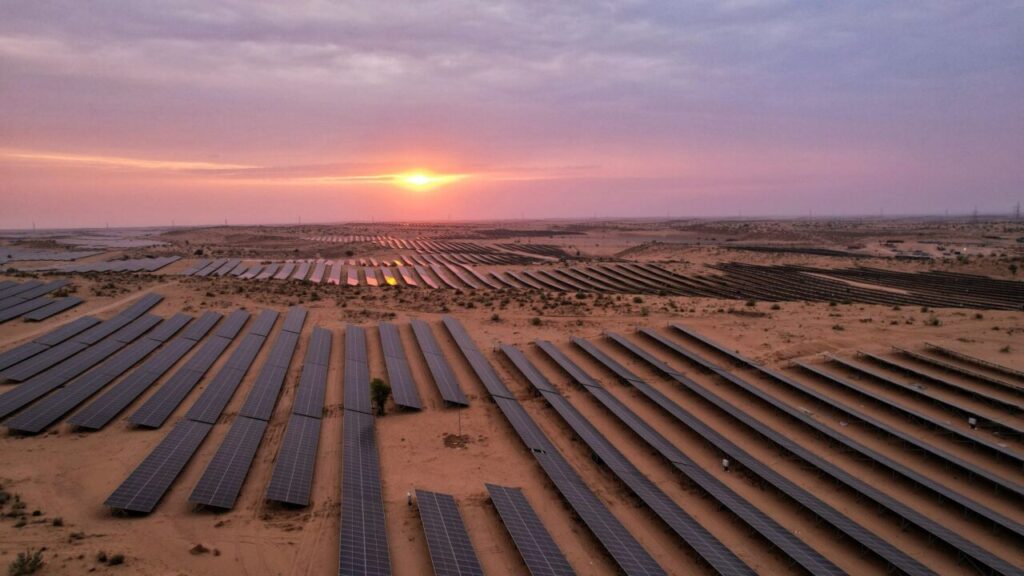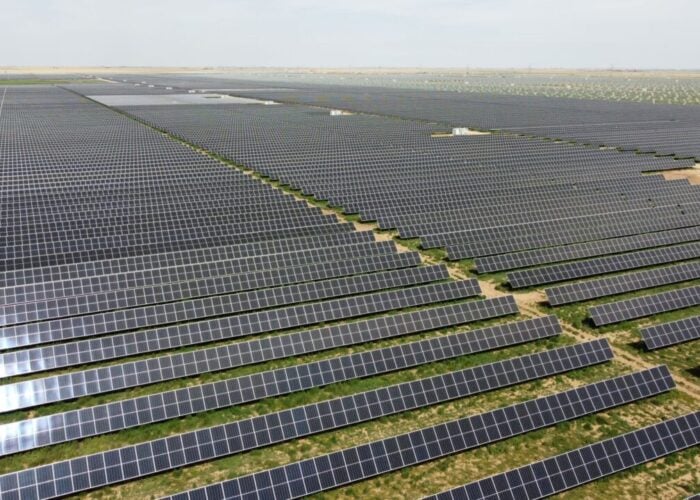
Solar PV and energy storage technology will need policy support to reach “economically optimal” levels for the global energy transition, according to the latest forecast by Bloomberg New Energy Finance (BloomberNEF).
The New Energy Outlook 2025 report forecast that global renewable energy capacity will increase by 84% in the next five years and double again by 2050, serving 67% of global electricity demand. It also hypothesised that 2024 “may have been the peak year for [carbon] emissions” and that “strong fundamentals” like low cost and technological maturity will accelerate the adoption of renewables.
Unlock unlimited access for 12 whole months of distinctive global analysis
Photovoltaics International is now included.
- Regular insight and analysis of the industry’s biggest developments
- In-depth interviews with the industry’s leading figures
- Unlimited digital access to the PV Tech Power journal catalogue
- Unlimited digital access to the Photovoltaics International journal catalogue
- Access to more than 1,000 technical papers
- Discounts on Solar Media’s portfolio of events, in-person and virtual
Or continue reading this article for free
A report from the International Energy Agency (IEA) showed that the world now has 2.2TW of installed solar PV capacity, and massive manufacturing expansions in China have pushed the price of solar modules down dramatically in recent years with the effect of lowering the levelised cost of energy (LCOE) of solar compared with other power sources.
Meeting renewables’ ‘economic potential’
However, the Outlook’s Economic Transition Scenario (ETS) forecast “won’t materialise by itself”, BloombergNEF said.
Its forecast modelling “Assumes that policymakers put in place the conditions for cost-optimal levels of clean energy deployment,” the Outlook said. However, it added there are “still substantial barriers to clean energy deployment in a number of markets…which may prevent wind, solar and storage from reaching the ‘economically optimal’ levels described in the ETS.”
These include market design, fossil fuel subsidies, permitting and planning challenges and grid infrastructure limitations., BloombergNEF said. “All these challenges need to be addressed if clean power is to reach its economic potential. Policymakers must take responsibility for creating the conditions for clean power to flourish.”
This is not the first report to highlight these concerns amid the overall positive growth trajectory for renewables. In October 2024, the IEA said that a lack of grid and energy storage infrastructure—and slow investment in its expansion—posed a threat to the energy transition. Its report said that 60 cents were spent on grids and storage for every dollar spent on new renewable capacity—a ratio that will ultimately result in an imbalance.
Price cannibalisation
Moreover, BloombergNEF said that the prospect of growing power price erosion “harms the economics of renewables, and ultimately storage.” Price cannibalisation – where renewables penetration lowers energy prices to near- or below-zero – “is strongest for solar but holds true for all zero-marginal-cost technologies,” the Outlook said. This could harm investment and confidence in renewable energy generation once a certain threshold is reached.
“Wholesale power prices will not be sufficient to drive investment levels consistent with our ETS, and so other market mechanisms will continue to be needed,” the report said, “By 2035, solar accounts for 23.5% of power generation globally – enough to trigger the cannibalisation effect described above in many markets. After this point, further growth in solar deployments depends on demand growth and higher levels of storage and flexibility on the grid.”
‘Not enough to avert climate disaster’
These concerns raise questions over the extent to which renewables will economically drive the energy transition in purely market-driven scenarios.
Speakers at Solar Media’s Large Scale Solar Europe conference in Lisbon, Portugal last month spoke of “renewables 2.0”, where the solar industry was becoming more market-driven and less reliant on government intervention. This reflected a broader sentiment of a “maturing” industry now governed more by market forces than policy directive.
However, BloombergNEF’s report said that, in order to reach a Net Zero scenario by 2050 – which is less likely than its ETS – “deploying only economically competitive climate solutions will not be enough to avert climate disaster.”
Moreover, as overall electricity demand increases, the New Energy Outlook 2025 said that “important economies like India, Vietnam and Indonesia” will continue to increase their carbon emissions even as the global total falls. Other countries will have a “long plateau” in emissions and the ETS scenario – driven by the economics of the energy transition – sees global annual emissions fall just 22% by 2050, far below the Paris Agreement’s Net Zero target.
BloombergNEF forecast that 6.9TW of solar PV will be constructed between now and 2035 under its ETS, alongside 2.6TW of wind, while the share of coal, gas and oil in the power system drops to 25% in 2050.
The executive summary of BloombergNEF’s report can be found here.






